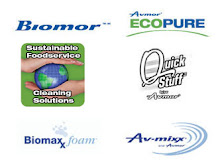Many facility managers, cleaning professionals, and even carpet
cleaning technicians are not quite sure about what it means to groom
carpets. In all fairness, there is a good reason for this ambiguity.
Grooming carpets is not as common as it once was. However, there are
benefits to grooming of which building and cleaning and facility
professionals should be aware.
To help better understand carpet grooming and its benefits, Mark Baxter, an engineer with U.S. Products who has been involved in the carpet cleaning industry for more than a decade, sat down to answer a few questions on the subject.
Robert Kravitz (RK): How should carpet grooming fit into a facility’s regular floor maintenance program? How often should it be performed?
Mark Baxter (MB): First, let me define some terms. Carpet grooming is sometimes called carpet raking. While that term might not sound very professional, and typically refers to leaves rather than carpets, in many ways it describes the actual process more accurately than grooming. Grooming or raking a carpet means using a specially made tool that looks very much like a garden rake. This tool is dragged over the carpet to pull up its pile or nap. This process helps to loosen soils and keeps the yarn of the carpet lifted.
Cleaning professionals often consider grooming a carpet only before or after cleaning. However, for best results, grooming should be a part of a regular carpet maintenance program. For instance, if performed regularly prior to vacuuming, grooming can help to loosen dry soils, making soils easier to remove and enhancing the overall appearance of the carpet.
Read more:




--ENGLISH_V1_02.jpg)








